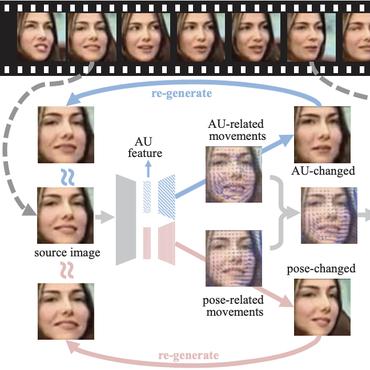PIAP-DF: Pixel-Interested and Anti Person-Specific Facial Action Unit Detection Net With Discrete Feedback Learning
Facial Action Units (AUs) are of great significance in communication. Automatic AU detection can improve the understanding of psychological conditions and emotional status. Recently, several deep learning methods have been proposed to detect AUs automatically. However, several challenges, such as poor extraction of fine-grained and robust local AUs information, model overfitting on person-specific features, as well as the limitation of datasets with wrong labels, remain to be addressed. In this paper, we propose a joint strategy called PIAP-DF to solve these problems, which involves 1) a multi-stage Pixel-Interested learning method with pixel-level attention for each AU; 2) an Anti Person-Specific method aiming to eliminate features associated with any individual as much as possible; 3) a semi-supervised learning method with Discrete Feedback, designed to effectively utilize unlabeled data and mitigate the negative impacts of wrong labels. Experimental results on the two popular AU detection datasets BP4D and DISFA prove that PIAP-DF can be the new state-of-the-art method. Compared with the current best method, PIAP-DF improves the average F1 score by 3.2% on BP4D and by 0.5% on DISFA. All modules of PIAP-DF can be easily removed after training to obtain a lightweight model for practical application.
PDF Abstract


 ImageNet
ImageNet
 DISFA
DISFA
 BP4D
BP4D